Brushing a cat can be a frustrating experience for both the pet and its owner. Some cats hate being brushed, while others will tolerate it with some coaxing. If your cat doesn’t enjoy being brushed, several different brushes are designed to accommodate this type of pet.
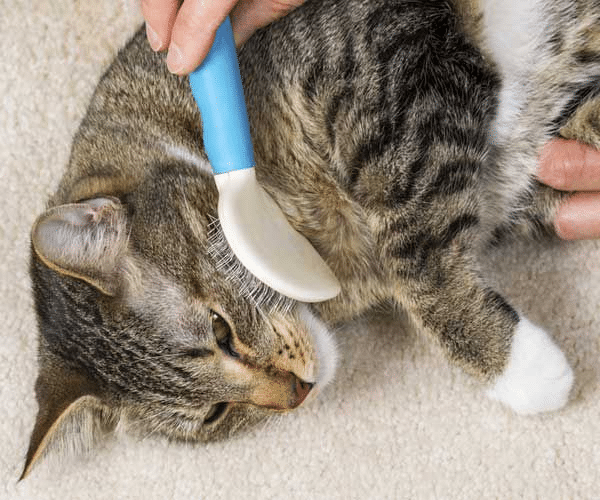
Source: google.com
My Cat Despises Being Brushed! What should I do?
Many cats can willingly tolerate being groomed, but what can you do if your cat isn’t in the mood to be pampered? First, you should figure out why your cat dislikes being groomed. When a cat’s coat is highly matted, it might cause pain. If this is the case, the best alternative is to take your cat to a vet or a trained groomer to get the uncomfortable mats removed before attempting to start a brushing regime at home.
Some cats loathe being touched in general, and most of the time, their aversion to grooming stems from fear. This is a good thing because, with time, patience, and additional attention, you can help your ‘scaredy cat’ develop a positive relationship with grooming!
Check that you have the necessary tools.
Some cats prefer quick deep brushing, while others may only endure light bristles. There are as many sorts of brushes as there are varieties of cat hair, so try a few different ones to determine which ones you and your cat prefer.
First, trim their nails!
They are trimming just the tip of your cat’s sharp claws before grooming can prevent accidental scratches on you and foster healthy clawing activities in your cat. Several nail trimmers are available, but most cat owners prefer the scissor form.
Begin slowly.
Please encourage them to sniff or rub against the bristles of the brush. Cats, in particular, prefer to be in charge of every situation. Therefore this helps them to feel as if they are grooming themselves! With an incentive, encourage any positive interest in the brush. Could you not bring it up again? After a few good sniffing and rubbing sessions, you can progress to the next stage: brushing!
Brush
Begin with regions where your cat enjoys being petted. This is typically found on their back, between their ears, and beneath their chin. Stick and pet them lightly to ensure they are open to being touched. Allow your cat to move freely without restraint (and leave if needed). You can then begin brushing your teeth. Brush with the grain of the hair, concentrating on one region at a time.
As your cat becomes more responsive to brushing, you can gradually progress to more sensitive places, such as the stomach or rear end.
Look for overstimulation symptoms, such as tail flicking or lashing, dilated pupils, flattened ears, gazing, fur rippling, low growls or hisses, or general tenseness. If your cat displays discomfort, cease grooming them before they become angry. If your cat only tolerates brushing for one minute, start with 30 seconds and work your way up. Speak in calming tones and thank them for their efforts with a treat or catnip.
Remember that cats enjoy routine, and the best time to try brushing is when it is a part of their natural habits. This would come after play and eating, so brushing after a meal may make your cat more receptive.
The Top 8 Cat Brushes in 2022
Hertzko Self-Cleaning Slicker Brush for Dogs
The most crucial overall cat brush is the Hertzko Self Cleaning Slicker Brush. It contains bent wire bristles that are long enough to reach beneath your cat’s top coat while remaining flexible enough not to scratch your cat’s skin. It’s excellent for removing dander, minimising matting, removing loose hair, and maintaining your cat’s coat in pristine condition. You’ll be shocked at how much hair you collect when brushing your cat’s coat in only a few minutes.
The Hertzko brush is likewise uncomplicated, with a size that is both substantial and comfortable to hold. The regular model’s brush head is a little under six inches across, providing plenty of surface area for efficient brushing.
The self-cleaning button is one of the most excellent features. With a fast click, the bristles retract and release all of the hair you’ve captured.
This grooming tool is suitable for long and short-haired cats and almost all canine breeds. The comfortable grip handle prevents slippage and wrist strain.
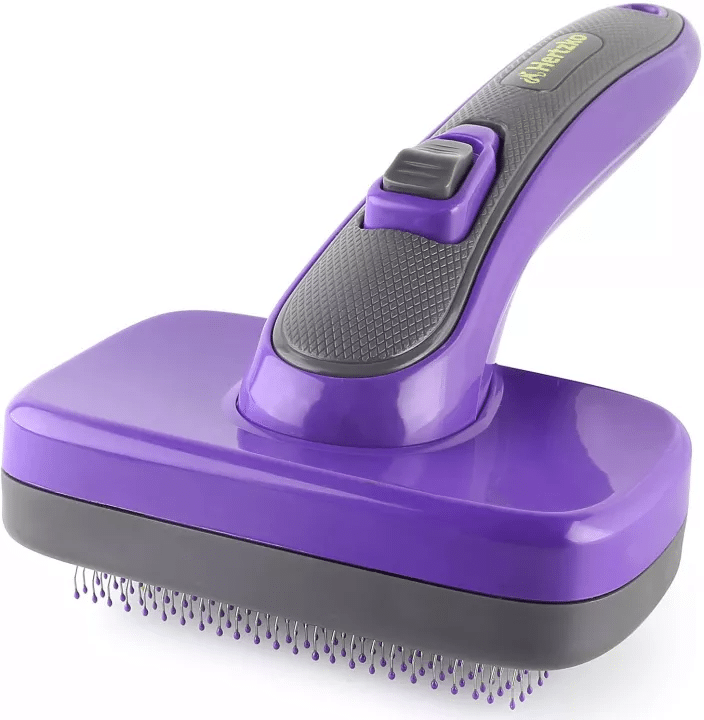
Source: google.com
Mars Coat King Boar Bristle Cat Hair Brush
The Mars Boar Bristle Cat Hair Brush is a good alternative if your cat has short hair. This high-quality German-made brush is ideal for grooming your cat, with a charmingly old-fashioned varnished birchwood handle and natural boar bristles. Even the pickiest felines tolerate the extraordinarily thin bristles. With careful strokes, you may reduce shedding and allergens in your home while also assisting your cat in developing a healthy, lustrous coat.
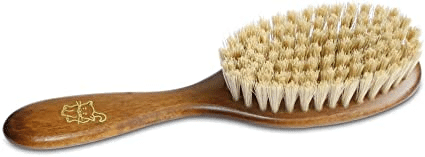
Source: google.com
Safari Self-Cleaning Slicker Brush for Cats
The Safari Self-Cleaning Slicker Brush is the finest choice for long-haired breeds. It features soft stainless steel pins to groom your cat without irritating or scratching the skin. The bristles are precisely engineered to allow you to brush through both the topcoat and the undercoat with minimal effort.
This slicker won’t strain your wrists thanks to its soft, gripping handle (even after several minutes of brushing). You may release all of the hair you’ve collected by retracting the bristles with the push of a button. This allows you to use the brush as often as you need to and ensures that all of your pet’s fur ends up in the trash rather than on your clothes or around your home.
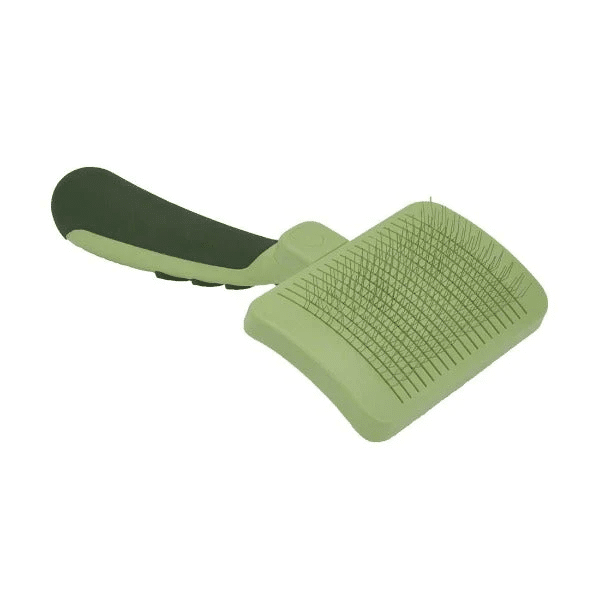
Source: google.com
FURminator Undercoat deShedding Tool for Cats
Cat owners are all too familiar with continual shedding, but it doesn’t have to be that way with the FURminator Undercoat deShedding Tool. The stainless steel edge of this tool easily cuts through the topcoat and into the undercoat to safely remove stray hair and dander. When applied daily, it can reduce your pet’s shedding by up to 90%.
The FURminator for Cats is available in two sizes and for both long and short hair types. Its ergonomic handle fits easily in your hand, and the comb is curved to fit your feline’s body. Many cats appreciate being brushed with the FURminator because it saves them time brushing themselves, reduces hairballs, and feels like being softly handled by their owners.

Source: google.com
GoPets Dematting Comb
If your pet’s fur is matted, consider using the GoPets Dematting Comb. This grooming tool contains 23 teeth on one side and 12 on the other, letting you work through various mats and tangles. The 23-toothed end also functions as a deshedding comb and an undercoat brush to remove stray hair and dander.
While this cat brush appears to be a gardening tool, it is delicate and practical, making grooming both cats and their owners a pleasurable experience. Its strong teeth have rounded tips that allow it to cut through mats without pulling or damaging your cat’s skin. Furthermore, the non-slip gel handle fits your hand’s curves, providing a stable grasp from any angle.
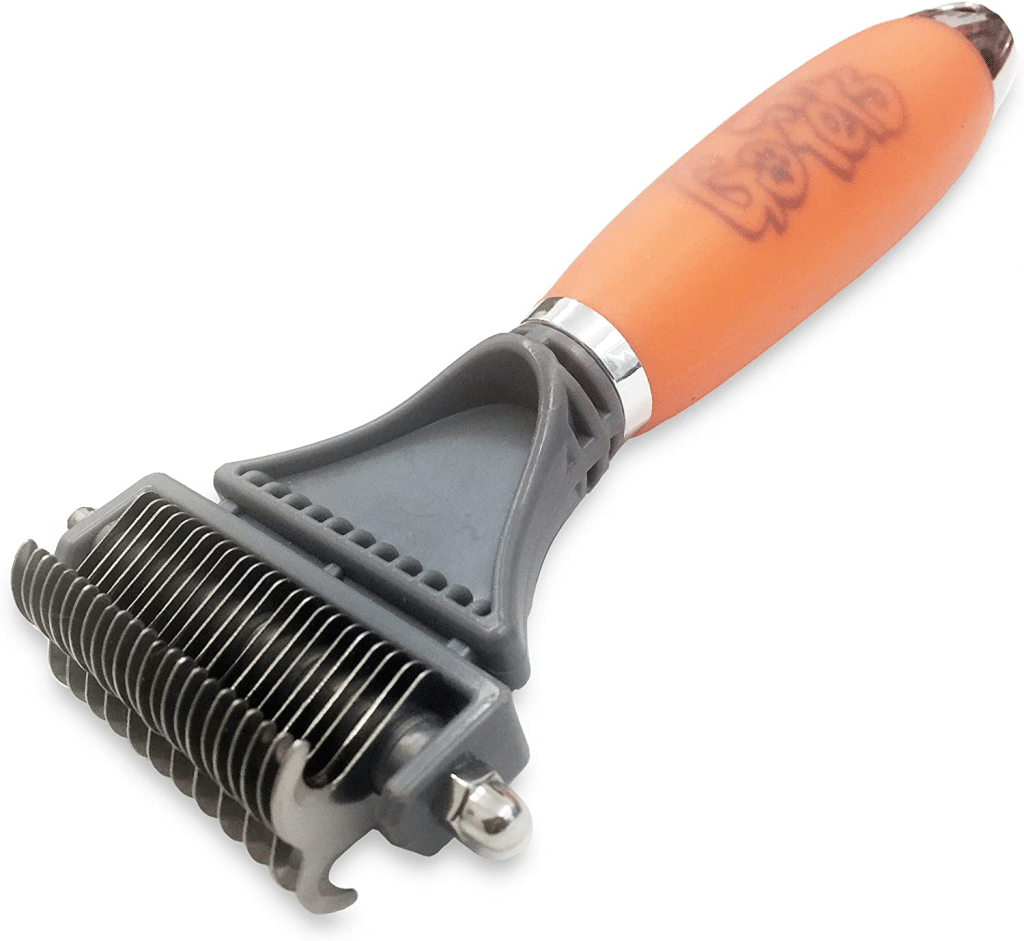
Source: google.com
Mr. Peanut’s Pet Grooming Glove Brush and Deshedding Aid
We recommend the Mr. Peanuts Pet Grooming Glove Brush if you like a glove-style brush. You will receive a pair of gloves composed of comfortable mesh and rubber. They are available in a universal adult size with adjustable velcro straps around the wrists.
It is simple to lift hair, remove dandruff, and comb away mats and knots using the palms’ rubber tips. You’ll notice lots of loose hair when you put on these gloves and brush your cat’s fur. When you’re done, the accumulated hair will peel off the gloves for easy disposal. Wash the gloves in warm, soapy water and air-dry them between uses.

Source: google.com
Andis Steel Pet Comb
Some cats, like humans, enjoy combs. The 7.5-inch Andis Steel Comb contains narrow and wide teeth to remove mats, tangles, loose fur, dirt, and dander while stimulating your cat’s skin and hair follicles. The more giant teeth are perfect for larger strokes across your pet’s coat, while the more refined end is ideal for paws, faces, and other delicate regions.
This comb is also ideal for shaping and fluffing your cat’s fur before a performance (or just for show).
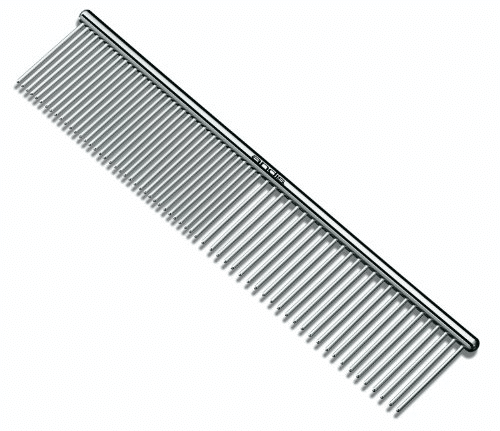
Source: google.com
CeleMoon Washable Ultra-Soft Silicone Cat Grooming Brush
Silicone grooming tools like the CeleMoon Cat Grooming Brush are excellent at eliminating cat hair. After a few minutes of brushing, the large soft teeth softly and quickly remove up to 90% of stray hair. As you work through your cat’s coat, expect a clutch of fur in just a few strokes.
The non-slip hand grip on this silicone brush makes it easy to hold while grooming your pet. It is also simple to clean; wash it in warm water to remove hair from your brushing session.

Source: google.com
What to Look for When Shopping for a Cat Brush
Bristle Style
Many brushes are suitable for shorthair cats, but if you want to keep shedding at bay, use a brush with firmer bristles. Consider a brush with bristles that slide through long hair cats’ coats. Some cats prefer different textures, so try a different bristle substance if the first one fails.
Brush Shape
Choose a brush that is easy to grip. If your cat dislikes being groomed, consider using a glove-style brush.
Ease of Cleaning
Some brushes include features that make it easy to push the hair out of the brush once you’ve finished brushing. Others clean with soap and water.
Conclusion
Most cats hate getting brushed, but there is a suitable brush. If your cat hates being brushed, there are a few brushes that may work better for them. A stiff brush will rub against the cat’s skin and stimulate them, while a soft brush will be more gentle. Choose the brush you think your cat would enjoy and slowly introduce it to their grooming routine.
For more information, click here.
FAQs
Why does my cat hiss at me when I brush her?
Some people believe that their cats hiss when they are being brushed because they do not like the feeling of the bristles against their skin. Others think a cat hisses when angry or defensive because its fur is pulled. Whatever the reason, it is essential to understand why your cat hisses when you brush it and to use gentle strokes to avoid unpleasantness. Try out different pressures and brushes where possible.
Why does my cat dislike being brushed?
It might seem like a simple act of brushing your cat’s fur would be something they would love, but it seems as though this is not always the case. Many cats hate being brushed and try to get away from the person or object trying to brush them. There are a few reasons cats may dislike being brushed, but the most common one is that they feel it is too much work and do not enjoy handling it. Other cats may feel protected by their hair and not want it disturbed. Some cats also have allergies to specific brushes, so checking with your veterinarian before starting this brushing routine is essential.
